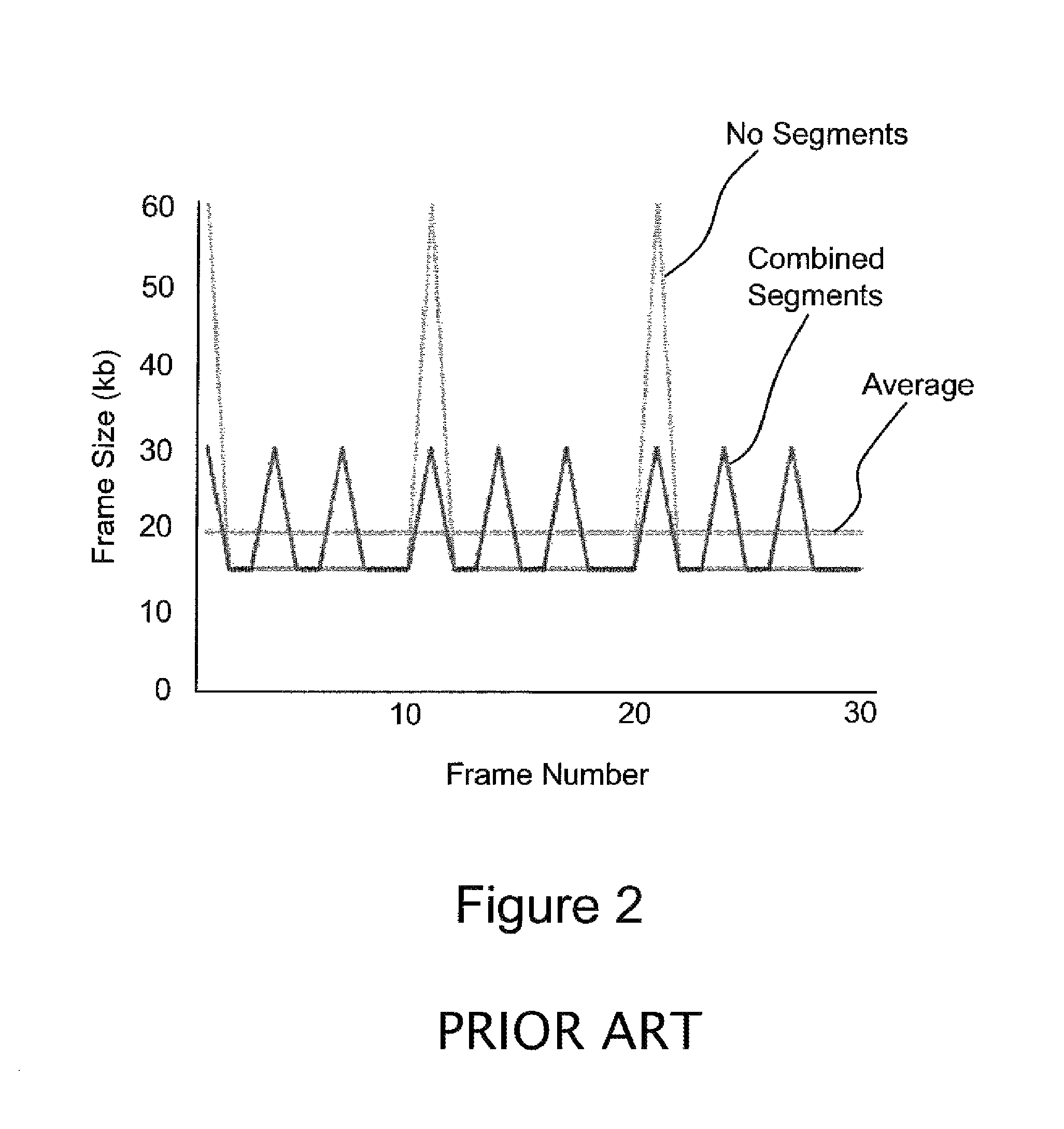Low latency high resolution video encoding
a high-resolution, low-latency technology, applied in the field of videoconferencing, can solve the problems of inconvenient communication between communicating parties, inconvenient and important, and the current system that supports communication over large distances is somewhat limited
- Summary
- Abstract
- Description
- Claims
- Application Information
AI Technical Summary
Benefits of technology
Problems solved by technology
Method used
Image
Examples
Embodiment Construction
[0013]According to an aspect of the instant invention there is provided a method for encoding in real time a video signal that is associated with one of a videoconference and a telepresence session, the method comprising: capturing video data and providing video signal data in dependence thereon; separating the video signal data into segments, the segments identical from one video frame to another subsequent video frame within a same video signal data; encoding each segment independently to result in encoded segment data such that both I-frames and P-frames are generated for a given segment and allowing for independent reconstruction of segments at a distant end; and, transmitting the encoded segment data.
[0014]According to an aspect of the instant invention there is provided a method for encoding in real time a video signal that is associated with one of a videoconference and a telepresence session, the method comprising: capturing a sequence of video frame data, the sequence of vi...
PUM
 Login to View More
Login to View More Abstract
Description
Claims
Application Information
 Login to View More
Login to View More - R&D
- Intellectual Property
- Life Sciences
- Materials
- Tech Scout
- Unparalleled Data Quality
- Higher Quality Content
- 60% Fewer Hallucinations
Browse by: Latest US Patents, China's latest patents, Technical Efficacy Thesaurus, Application Domain, Technology Topic, Popular Technical Reports.
© 2025 PatSnap. All rights reserved.Legal|Privacy policy|Modern Slavery Act Transparency Statement|Sitemap|About US| Contact US: help@patsnap.com



